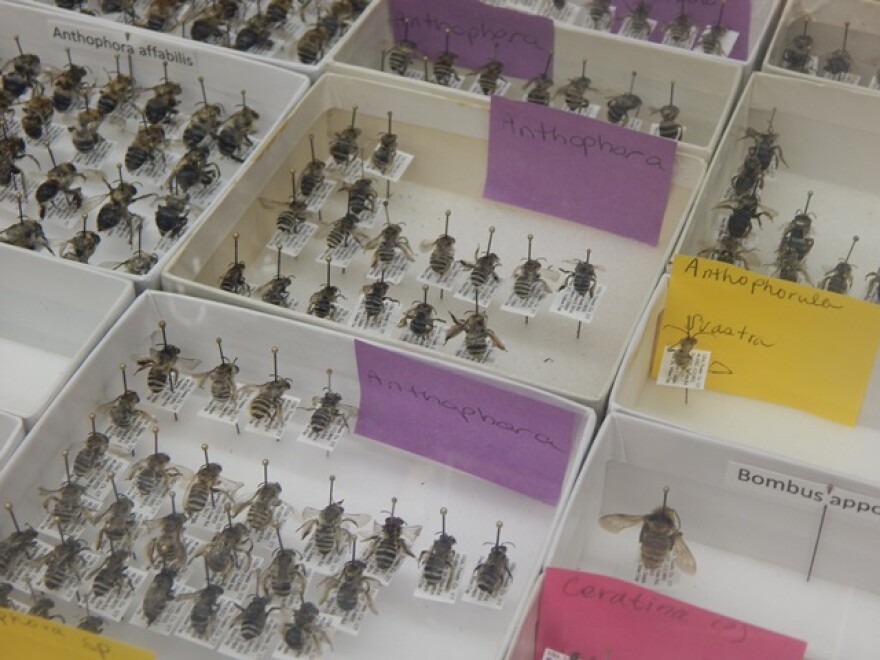Honeybees have been in the news lately because they’re disappearing. They’re crucial to food production, but they’re not native to North America. Now some scientists are turning their attention to the importance and health of native pollinators. Researchers are using the elevation of the San Francisco Peaks to study how local insects might respond to a warming global climate.
Dave Smith and Lindsie McCabe are infatuated with insects.
“When you’re growing up it just isn’t cool to be seen running around the neighborhood with a butterfly net,” Smith says. “I was kind of a closet entomologist as I was growing up.”

McCabe adds, “I have loved bugs my whole entire life.”
McCabe is a Ph.D. student in the Department of Biological Sciences at Northern Arizona University. Smith is a biologist with the U.S. Fish and Wildlife Service. Seven years ago he began searching for the ideal place to study how native pollinators might respond to climate change.
“I was looking at the area round Flagstaff, where we had a range from low desert to high elevation on the Peaks, thinking this would be a very interesting place to do work like this,” Smith says.
The Merriam-Powell Center for Environmental Research thought so too. It had been using the San Francisco Peaks as a ‘natural laboratory’ for more than a decade. The Center’s director, Neil Cobb, shared Smith’s interest in making an inventory of native bees.

Native bees are vital for healthy ecosystems, and they pollinate many of the crops we eat. They don’t suffer from Colony Collapse Disorder, a mysterious phenomenon that kills roughly a third of the nation’s domesticated honeybees each year. Even so, some native species are declining from habitat loss and exposure to pesticides.
“You can’t predict what’s going to change or how it will change if you don’t even know what’s there,” Cobb says. “We probably have enough data for minimal modeling for maybe 10 percent of the insects in North America.”
Cobb says we don’t yet know how climate change will affect native bees and other pollinators. “What’s really turning out to be very, very precious is this data that people collected 30, 40, 50 years ago, because it is now becoming important to understand how species have already changed,” he says.

That’s why Cobb, Dave Smith and Lindsie McCabe want to create a baseline for the pollinators at different elevations on the San Francisco Peaks—something for climate change researchers to use decades from now.
McCabe is showing her assistants how to set up “pan traps” in the field—essentially, fake flowers made out of brightly colored plastic cups. “Right now we’re at one of our sites, our mixed conifer site, and we’re setting up an array,” she says.
This research site, midway up the mountain, is an important transition zone. Above this point, the climate is too cold and moist for most bees. McCabe discovered that at about 8,000 feet flies take over as the primary pollinator.

“Bees, although our dominant pollinator, are not our only pollinator,” McCabe says. “There are very few fly pollination studies going on… It’s really important for us to get a baseline.”
So far the researchers have found about 260 species of bees and flies on the San Francisco Peaks. This inventory will be the foundation for future studies that determine whether these pollinators adapt, thrive or disappear.







